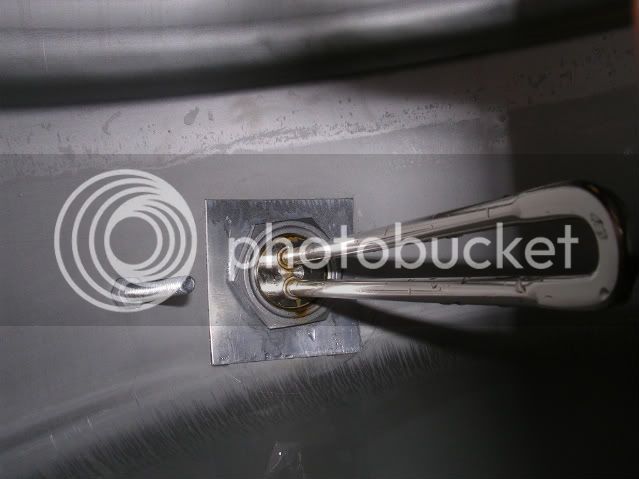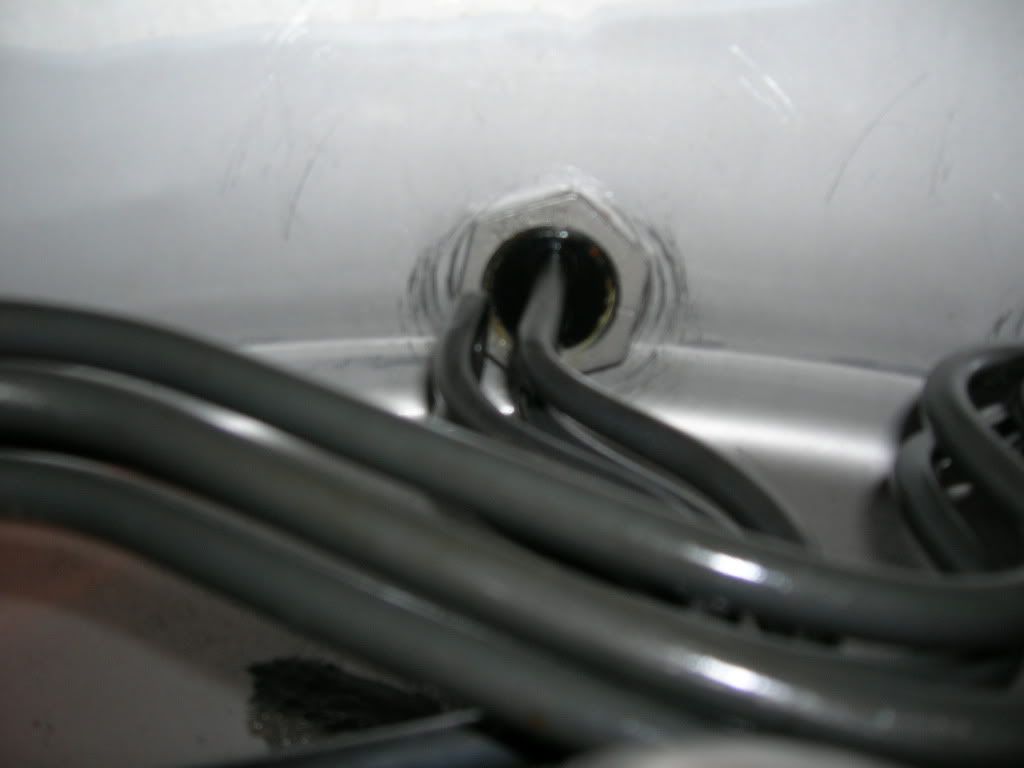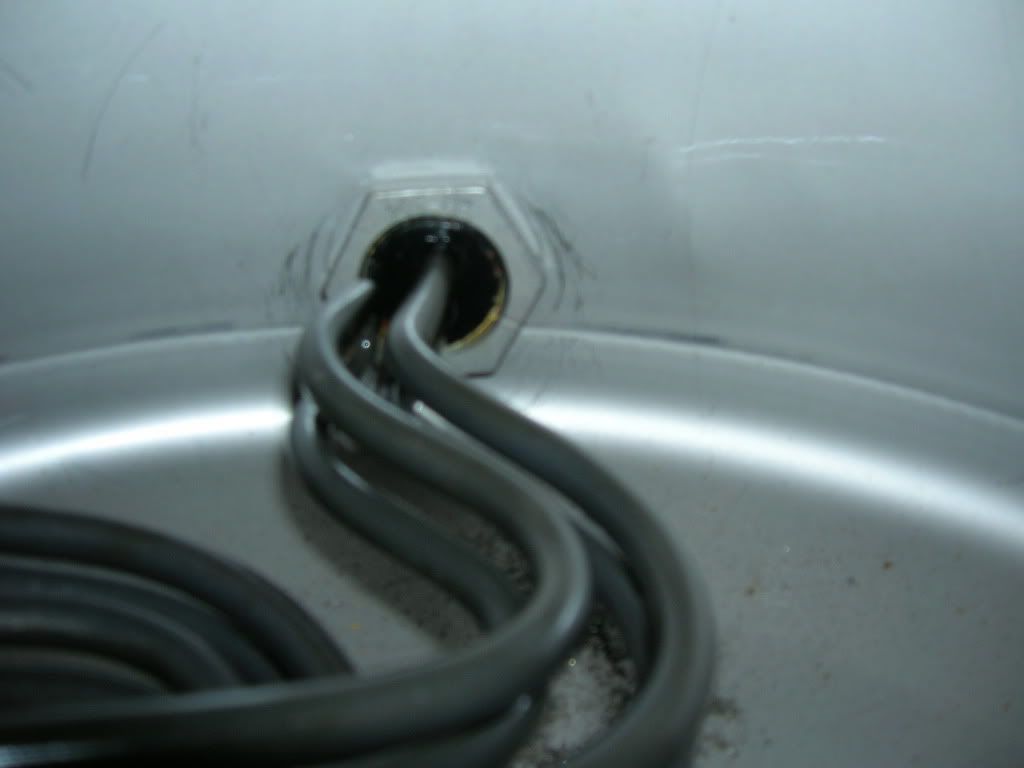Seriously, don't you guys have something more important to worry about? Replace the element once a year if it really bothers you. You'll spend more time and money on prevention than you would on replacement.
You are using an out of date browser. It may not display this or other websites correctly.
You should upgrade or use an alternative browser.
You should upgrade or use an alternative browser.
electric heating element rust prevention
- Thread starter shushikiary
- Start date

Help Support Homebrew Talk:
This site may earn a commission from merchant affiliate
links, including eBay, Amazon, and others.
was this a new element or one that you cleaned the rust off of? if there was any rust left maybe it still will spreadFAIL

I'm getting discouraged with this since science isn't working, and I'm thinking maybe I'm doing something wrong. Although it did seem a bit better than without the aluminum square. It seems most of the rust is forming where the element penetrates the body of the threaded piece. I guess because the plating isn't as solid there? Could the missing link be exchanging the stainless nut for an aluminum one?
Thanks for the ideas.
Mario
Seriously, don't you guys have something more important to worry about? Replace the element once a year if it really bothers you. You'll spend more time and money on prevention than you would on replacement.
You've wandered into the wrong topic, steve. This is DIY, which is latin for obsessive-compulsive overachievers engaged in spending inordinate amounts of time and cash on making something they could buy down the street.
mariojr
Well-Known Member
was this a new element or one that you cleaned the rust off of? if there was any rust left maybe it still will spread
This was a new element and was in water for about 14 hours.
shushikiary
Well-Known Member
hmm... this really has my mind jogging... You didnt use any teflon tape on the nut right (shouldnt make a difference, but good to know)? Are we also sure that it's rust and not some other residue left behind from your water?
oh... is that the same SS nut? did the nut perhaps have rust on it from the previous element?
It's also possible the aluminum flashing has a strong oxide layer built up on its surface and that perhaps sanding it moderately before installation would help.
You may simply need to get a better anode material (magnesium fire starter) and/or coat it like lamar says. I feel bad with you spending money on extra heating elements. This must have something to do with your water sense other people use the same element with the aluminum nuts and dont have rust (I fear for your water heater). It could be that the surface area of the aluminum isnt large enough to completely save your mild steel, but that's speculation. Seeing as how it's compressed between the nut and the wall of the keg, assuming you have an electrical connection from the nut to the element (which you most likely do, even with teflon tape), everything seems to have been done right. If I was you, I'd either coat it with POR-15, or try a magnesium fire starter.
I'm starting to understand your frustration mario.... This tells me that I'll be doing both just to be ridiculous. Time to go pick up some POR-15.
conpewter, did you just do a single coat of POR-15, and did you do any of their recommended prep steps (I'm assuming you did it on a new element)? I talked to them on the phone and they said that if I put the recomended 3 layers on that the nut would no longer fit over it, so did you just force the nut on? And when the nut went on did it strip the POR-15 from the threads?
oh... is that the same SS nut? did the nut perhaps have rust on it from the previous element?
It's also possible the aluminum flashing has a strong oxide layer built up on its surface and that perhaps sanding it moderately before installation would help.
You may simply need to get a better anode material (magnesium fire starter) and/or coat it like lamar says. I feel bad with you spending money on extra heating elements. This must have something to do with your water sense other people use the same element with the aluminum nuts and dont have rust (I fear for your water heater). It could be that the surface area of the aluminum isnt large enough to completely save your mild steel, but that's speculation. Seeing as how it's compressed between the nut and the wall of the keg, assuming you have an electrical connection from the nut to the element (which you most likely do, even with teflon tape), everything seems to have been done right. If I was you, I'd either coat it with POR-15, or try a magnesium fire starter.
I'm starting to understand your frustration mario.... This tells me that I'll be doing both just to be ridiculous. Time to go pick up some POR-15.
conpewter, did you just do a single coat of POR-15, and did you do any of their recommended prep steps (I'm assuming you did it on a new element)? I talked to them on the phone and they said that if I put the recomended 3 layers on that the nut would no longer fit over it, so did you just force the nut on? And when the nut went on did it strip the POR-15 from the threads?
conpewter
Well-Known Member
I did the cleaning part (bought their little kit) and then probably put two coats on. I think I brushed on a really light layer once on the threads, but I still had to dig some out when I put the nut on (razorblade) The ones before that I just put it on the face and didn't worry about the threads, I've not seen any rust stains or anything from it, so I think I'll just be Out of Sight Out of Mind on the threads...

$719.00
$799.00
EdgeStar KC2000TWIN Full Size Dual Tap Kegerator & Draft Beer Dispenser - Black
Amazon.com

$7.79 ($7.79 / Count)
Craft A Brew - LalBrew Voss™ - Kveik Ale Yeast - For Craft Lagers - Ingredients for Home Brewing - Beer Making Supplies - (1 Pack)
Craft a Brew

$58.16
HUIZHUGS Brewing Equipment Keg Ball Lock Faucet 30cm Reinforced Silicone Hose Secondary Fermentation Homebrew Kegging Brewing Equipment
xiangshuizhenzhanglingfengshop

$22.00 ($623.23 / Ounce)
AMZLMPKNTW Ball Lock Sample Faucet 30cm Reinforced Silicone Hose Secondary Fermentation Homebrew Kegging joyful
无为中南商贸有限公司

$33.99 ($17.00 / Count)
$41.99 ($21.00 / Count)
2 Pack 1 Gallon Large Fermentation Jars with 3 Airlocks and 2 SCREW Lids(100% Airtight Heavy Duty Lid w Silicone) - Wide Mouth Glass Jars w Scale Mark - Pickle Jars for Sauerkraut, Sourdough Starter
Qianfenie Direct

$53.24
1pc Hose Barb/MFL 1.5" Tri Clamp to Ball Lock Post Liquid Gas Homebrew Kegging Fermentation Parts Brewer Hardware SUS304(Liquid Hose Barb)
yunchengshiyanhuqucuichendianzishangwuyouxiangongsi

$159.50 ($26.58 / Count)
3M High Flow Series System BREW120-MS, 5616001, For Brewed Coffee and Hot Tea, Valve-in-Head Design
Amazon.com

$53.24
1pc Hose Barb/MFL 1.5" Tri Clamp to Ball Lock Post Liquid Gas Homebrew Kegging Fermentation Parts Brewer Hardware SUS304(Liquid Hose Barb)
Guangshui Weilu You Trading Co., Ltd

$10.99 ($31.16 / Ounce)
Hornindal Kveik Yeast for Homebrewing - Mead, Cider, Wine, Beer - 10g Packet - Saccharomyces Cerevisiae - Sold by Shadowhive.com
Shadowhive

$176.97
1pc Commercial Keg Manifold 2" Tri Clamp,Ball Lock Tapping Head,Pressure Gauge/Adjustable PRV for Kegging,Fermentation Control
hanhanbaihuoxiaoshoudian

$44.99
$49.95
Craft A Brew - Mead Making Kit – Reusable Make Your Own Mead Kit – Yields 1 Gallon of Mead
Craft a Brew
mariojr
Well-Known Member
Would this be a good choice to try?
http://www.walmart.com/ip/Coghlan-s...00000003260410&ci_src=14110944&ci_sku=8586954
http://www.walmart.com/ip/Coghlan-s...00000003260410&ci_src=14110944&ci_sku=8586954
lamarguy
Well-Known Member
Would this be a good choice to try?
http://www.walmart.com/ip/Coghlan-s...00000003260410&ci_src=14110944&ci_sku=8586954
Sure, to ignite thermite!
shushikiary
Well-Known Member
lol, thermite, I LIKE IT!
In posts from other threads I've read I believe that is what they were referring to, yes. The trick is getting the magnesium part to have a good connection to the SS keg or the steel part of the element.
For your case I'm starting to think that coating it with silicone or POR-15 might just be the better solution... from conpewters experience I think POR-15 would be the be all end all solution. But if you want to try the fire starter I'd love to see the results (dont spend the money if you dont want to, I feel bad having you do experiments at your cost).
I just had another thought.... did you ground your keggle to earth ground? If not, then the cathodic protection may not work properly.
In posts from other threads I've read I believe that is what they were referring to, yes. The trick is getting the magnesium part to have a good connection to the SS keg or the steel part of the element.
For your case I'm starting to think that coating it with silicone or POR-15 might just be the better solution... from conpewters experience I think POR-15 would be the be all end all solution. But if you want to try the fire starter I'd love to see the results (dont spend the money if you dont want to, I feel bad having you do experiments at your cost).
I just had another thought.... did you ground your keggle to earth ground? If not, then the cathodic protection may not work properly.
shushikiary
Well-Known Member
Well I got the rest of the parts for my keggle, and went out and got some POR-15. That stuff is serious business. I put 2 coats on and let it try, I didnt have to do anything and the nuts still fit just fine. I coated the face plate and the threads. It seems to be working nicely so far.
I did a test boil and let the water sit in it for 5 hours so far, and no issues. I dont have pics of the elements with the POR-15 on them, might grab some later, but here is a video of the thing boiling:
I did a test boil and let the water sit in it for 5 hours so far, and no issues. I dont have pics of the elements with the POR-15 on them, might grab some later, but here is a video of the thing boiling:
Last edited by a moderator:
jkarp
Well-Known Member
Interestingly, I made a couple heatsticks last weekend using the exact same Camco elements and rust appeared during an overnight soak test between the element and nut. I'm now convinced it's my aluminum kettle that's stopping the rust.
shushikiary
Well-Known Member
no rust, POR-15 seems to work well... no anode.




did you buy the POR-15 online?
shushikiary
Well-Known Member
no I got it from a local retailer, I called the POR-15 web site and talked to them about the aplication and if it would be ok, then they directed me to a local retailer so I didnt have to wait a week to get it.
olympionex
Member
I spoke with an engineer at Camco and found out that their ULWD devices are made with several types of metal. The bushing is made of steel and covered in zinc. The sheath is made of stainless steel. In my case, I'm using a plastic vessel, so these are the only two exposed metals. The stainless will induce galvanic corrosion of the thin zinc layer and rust will quickly occur. Camco's LWD devices have a nickel covering over everything. Theoretically this should help prevent such quick galvanic corrosion.
mariojr
Well-Known Member
I spoke with an engineer at Camco and found out that their ULWD devices are made with several types of metal. The bushing is made of steel and covered in zinc. The sheath is made of stainless steel. In my case, I'm using a plastic vessel, so these are the only two exposed metals. The stainless will induce galvanic corrosion of the thin zinc layer and rust will quickly occur. Camco's LWD devices have a nickel covering over everything. Theoretically this should help prevent such quick galvanic corrosion.
Nice work! It's about time someone has come up with some answers around here!
I have just resided to filling up my HLT as needed and not the night before to reduce the rust. In the future when I switch from 120v to 240v I'll be sure to get the LWD elements.
Thanks
Mario
olympionex
Member
Also, while oxidation of iron is generally caused by oxygen, and not water, this galvanic corrosion can only occur when the two metals are connected by an electrolyte (water, wort, etc). My mistake was to leave water in my HLT for 3 days while testing my new insulation. The problem can probably avoided somewhat by washing and drying everything as soon after the brewing process as possible.
conpewter
Well-Known Member
I had the first rust issues with extended time in the water as well, though over time it developed from normal brewing. I will look into the LWD elements for future builds. Looks like Nickel (and nickel alloys) are much much closer to passivated 304 stainless than Zinc (which is wayyyy down the chart)


Similar threads
- Replies
- 6
- Views
- 890
- Replies
- 4
- Views
- 3K
- Replies
- 2
- Views
- 1K








































![Craft A Brew - Safale BE-256 Yeast - Fermentis - Belgian Ale Dry Yeast - For Belgian & Strong Ales - Ingredients for Home Brewing - Beer Making Supplies - [3 Pack]](https://m.media-amazon.com/images/I/51bcKEwQmWL._SL500_.jpg)





